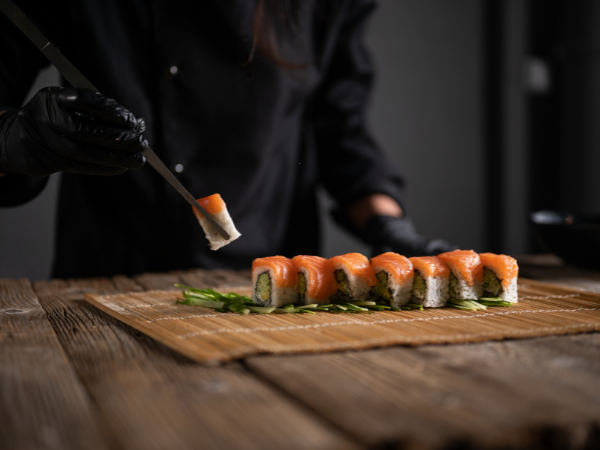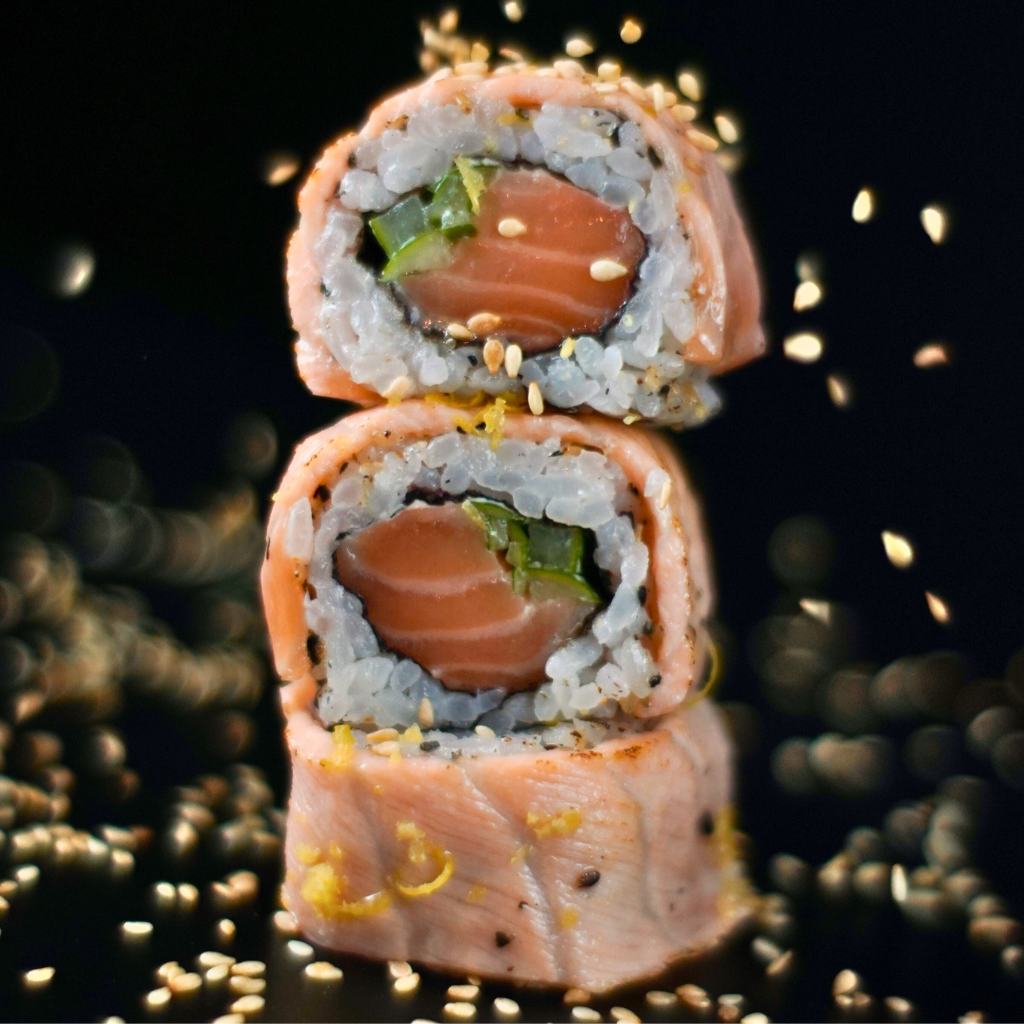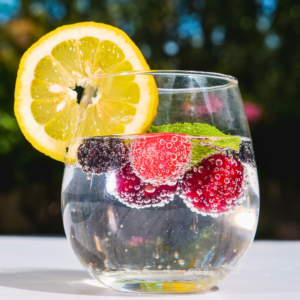Wabi, originating from Japan, is a fermented soybean paste known for its complex umami taste. This paste is made through a careful fermentation process, which enhances its rich flavor profile. It is often used in various Japanese dishes, adding depth and character to soups, sauces, and marinades.
Table of Contents
Defining Wabi Food
Originating from Japan, Wabi food focuses on natural flavors, minimalism, and an appreciation for the beauty of imperfection.
Core Ingredients
Wabi food relies on a few key ingredients that are chosen for their freshness and quality. These core ingredients form the foundation of many Wabi dishes and include:
- Rice: The staple of many Japanese meals, rice is often served plain or with minimal seasoning to highlight its natural flavor.
- Fish: Fresh fish, often served raw as sashimi or sushi, is a cornerstone of Wabi cuisine.
- Vegetables: Seasonal vegetables, such as daikon radish, shiitake mushrooms, and bamboo shoots, are used to create simple yet flavorful dishes.
- Seaweed: Various types of seaweed, like nori and kombu, add umami and texture to Wabi dishes.
- Fermented Foods: Miso, soy sauce, and pickled vegetables provide depth and complexity to the flavor profile.
The combination of these ingredients, along with careful preparation, results in a harmonious balance of tastes and textures that define Wabi food.
Cooking Techniques
Wabi food employs traditional Japanese cooking techniques that enhance the natural flavors of the ingredients. Some of the primary techniques include:
- Grilling (Yaki): Ingredients like fish and vegetables are grilled over an open flame to achieve a smoky flavor and crispy texture.
- Steaming (Mushi): Steaming preserves the nutrients and natural taste of ingredients, making it a popular method for cooking vegetables and fish.
- Simmering (Nimono): Foods are gently simmered in a seasoned broth, allowing flavors to meld together while retaining the integrity of the ingredients.
- Fermenting: Fermentation is key in creating dishes like miso soup and pickled vegetables, which offer complex flavors and health benefits.
- Raw Preparation: Serving ingredients raw, as in sushi and sashimi, highlights the freshness and quality of the food.
These techniques emphasize the importance of simplicity and respect for the ingredients, ensuring that each dish is a true representation of Wabi food philosophy.
Unique Flavors
Wabi is an extraordinary culinary delight that offers a symphony of flavors. Originating from ancient traditions, its unique taste profiles and seasonal variations make it stand out.
Taste Profiles
Wabi’s taste profiles are diverse and captivating. Each bite reveals a new layer of flavor. The primary tastes in Wabi include:
- Umami: The savory essence that leaves a deep and satisfying taste on your palate.
- Sweet: Subtle sweetness that balances the richness of other flavors.
- Sour: A tangy hint that adds a refreshing twist.
- Salty: A mild saltiness that enhances the overall taste.
- Bitter: A slight bitterness that provides a complex flavor profile.
Wabi often incorporates a mix of these taste elements, creating a harmonious blend. The ingredients used in Wabi contribute significantly to its taste. Common ingredients include:
| Ingredient | Taste Contribution |
|---|---|
| Fermented Soybeans | Umami |
| Rice Vinegar | Sour |
| Miso Paste | Salty |
| Honey | Sweet |
| Green Tea | Bitter |
Seasonal Variations
Wabi’s flavors change with the seasons. This makes each experience unique. During spring, fresh ingredients are abundant. These ingredients include:
- Cherry Blossoms: Adds a floral sweetness.
- Fresh Peas: Contribute a light, sweet taste.
Summer brings vibrant and refreshing flavors. Key summer ingredients include:
- Cucumber: Adds a cool, crisp taste.
- Mint: Provides a fresh, aromatic flavor.
In autumn, Wabi incorporates earthy and robust tastes. Typical autumn ingredients are:
- Pumpkin: Adds a rich, sweet flavor.
- Mushrooms: Contribute an earthy umami taste.
Winter flavors are warm and comforting. Ingredients used in winter include:
- Ginger: Adds a warm, spicy kick.
- Root Vegetables: Provide a hearty, sweet flavor.
Each season brings a new flavor palette to Wabi. This seasonal variation ensures that Wabi remains exciting and delightful throughout the year.

Regional Variations
These regional differences arise from the use of local ingredients and distinct cooking styles.
Local Ingredients
Local ingredients define the heart of Wabi cuisine. Different regions use various native elements, adding a unique touch to the Wabi dishes. These ingredients give the food its distinctive flavor profile.
In the northern regions:
- Wild herbs: Add a refreshing aroma and flavor.
- Fish: Freshwater fish is a staple, adding a rich, savory taste.
- Root vegetables: Such as yams and sweet potatoes, provide a hearty base.
In the southern regions:
- Tropical fruits: Mangoes and pineapples add a sweet and tangy flavor.
- Spices: Local spices bring heat and depth to the dishes.
- Seafood: Coastal areas use a variety of seafood, enhancing the umami taste.
The use of local ingredients not only preserves tradition but also ensures that each Wabi dish reflects the local environment and culture.
| Region | Key Ingredients |
|---|---|
| North | Wild herbs, fish, root vegetables |
| South | Tropical fruits, spices, seafood |
Cooking Styles
The cooking styles of Wabi dishes also differ by region, adding another layer of uniqueness. Each method enhances the flavors of the local ingredients, creating a variety of taste experiences.
In the northern regions:
- Slow-cooking: Enhances the depth of flavors in stews and broths.
- Smoking: Adds a rich, smoky flavor to meats and fish.
- Fermentation: Preserves vegetables and adds a tangy taste.
In the southern regions:
- Grilling: Adds a charred, smoky flavor to seafood and meats.
- Stir-frying: Preserves the crunchiness of vegetables while adding a burst of flavor.
- Marinating: Infuses meats and vegetables with spices and herbs.
These cooking styles not only enhance the flavors but also bring out the best in the ingredients used. Each technique reflects the region’s culinary history and practices.
| Region | Cooking Styles |
|---|---|
| North | Slow-cooking, smoking, fermentation |
| South | Grilling, stir-frying, marinating |
The combination of local ingredients and unique cooking styles makes Wabi food a true culinary journey, offering a taste of the region’s heritage with every bite.
Wabi In Modern Cuisine
Chefs love to experiment with this versatile ingredient, incorporating it into a variety of innovative dishes. Let’s explore how Wabi is being embraced in modern cuisine.
Fusion Dishes
Wabi’s unique taste and texture make it a perfect candidate for fusion dishes. Chefs blend Wabi with different culinary traditions to create dishes that excite the palate. Here are some popular fusion dishes featuring Wabi:
- Wabi Tacos: Combining the zest of Mexican cuisine with the subtle flavors of Wabi, these tacos are a hit. The soft shell complements the tender Wabi, creating a delightful bite.
- Wabi Sushi Burritos: A fusion of Japanese and Mexican cuisines, this dish wraps Wabi in seaweed and rice, then adds fresh veggies and spicy sauces.
- Wabi Pasta: Italian pasta meets Japanese Wabi in a creamy, umami-rich sauce. The blend of flavors is both comforting and exotic.
Fusion dishes allow chefs to experiment with Wabi’s flavors in various culinary contexts. The versatility of Wabi makes it a favorite among those looking to innovate and surprise diners.
Contemporary Chefs
Renowned chefs around the world are incorporating Wabi into their menus. Their creativity and expertise bring out the best in this traditional ingredient. Some notable chefs and their Wabi creations include:
| Chef | Signature Wabi Dish |
|---|---|
| Chef Akira Sato | Wabi Tempura with Truffle Aioli |
| Chef Maria Gonzalez | Wabi Paella |
| Chef John Smith | Wabi and Avocado Tartare |
These contemporary chefs use their culinary skills to highlight Wabi’s unique flavors. Their innovative dishes draw food enthusiasts eager to experience something new and exciting.
By incorporating Wabi into their menus, these chefs are not only preserving a traditional ingredient but also pushing the boundaries of modern cuisine.
Health Benefits Wabi
This delightful food not only offers a gastronomic experience but also brings numerous health benefits. Understanding the health benefits of Wabi can enrich your diet and improve your overall well-being.
Nutritional Value
Wabi is packed with essential nutrients that contribute to a balanced diet. It contains a variety of vitamins, minerals, and antioxidants. Here are some key nutritional components:
- High in Fiber: Promotes healthy digestion and prevents constipation.
- Rich in Protein: Supports muscle growth and repair.
- Vitamins: Contains vitamins A, C, and E, which boost the immune system.
- Minerals: Provides essential minerals like iron, calcium, and magnesium.
Below is a table summarizing the nutritional content of a typical serving of Wabi:
| Nutrient | Amount per Serving |
|---|---|
| Fiber | 7g |
| Protein | 15g |
| Vitamin A | 700 IU |
| Vitamin C | 30mg |
| Iron | 2mg |
| Calcium | 100mg |
These nutrients make Wabi an excellent choice for a healthy, balanced diet. The fiber content supports digestive health, while the high protein level aids in muscle maintenance. Vitamins and minerals fortify the immune system and enhance overall health.
Dietary Considerations
Wabi is a versatile food that caters to various dietary needs. It’s important to consider the following points to ensure it fits well into different diets:
- Gluten-Free: Wabi is naturally gluten-free, making it suitable for people with gluten intolerance or celiac disease.
- Low in Fat: Contains minimal fat, making it ideal for low-fat diets.
- Vegetarian and Vegan Options: Can be prepared without animal products, catering to vegetarian and vegan preferences.
- Allergy-Friendly: Free from common allergens like nuts and dairy.
Incorporating Wabi into your diet is easy due to its flexibility. Whether you follow a gluten-free diet or prefer plant-based meals, Wabi accommodates your needs. It’s an excellent addition to a balanced diet, promoting health and well-being.
Frequently Asked Questions
What Is Wabi-sabi Food?
Wabi-sabi food embraces simplicity and imperfection. It values natural, unrefined ingredients and rustic presentation. This Japanese aesthetic celebrates the beauty in flaws and authenticity. Wabi-sabi cuisine focuses on mindful eating and appreciating the natural state of food. It encourages a connection with nature and the present moment.
What Is The Most Unique Food In Japan?
Fugu, or pufferfish, is the most unique food in Japan. Chefs need special training to prepare it safely. Its delicate taste and potential danger make it a rare delicacy.
What Is Wabi-sabi Made Of?
Wabi-sabi is made of natural materials. It includes wood, stone, and clay, emphasizing simplicity and imperfection.
What Is Wabi Food?
Wabi food is a unique culinary creation originating from Japan. It focuses on simplicity and natural flavors.



